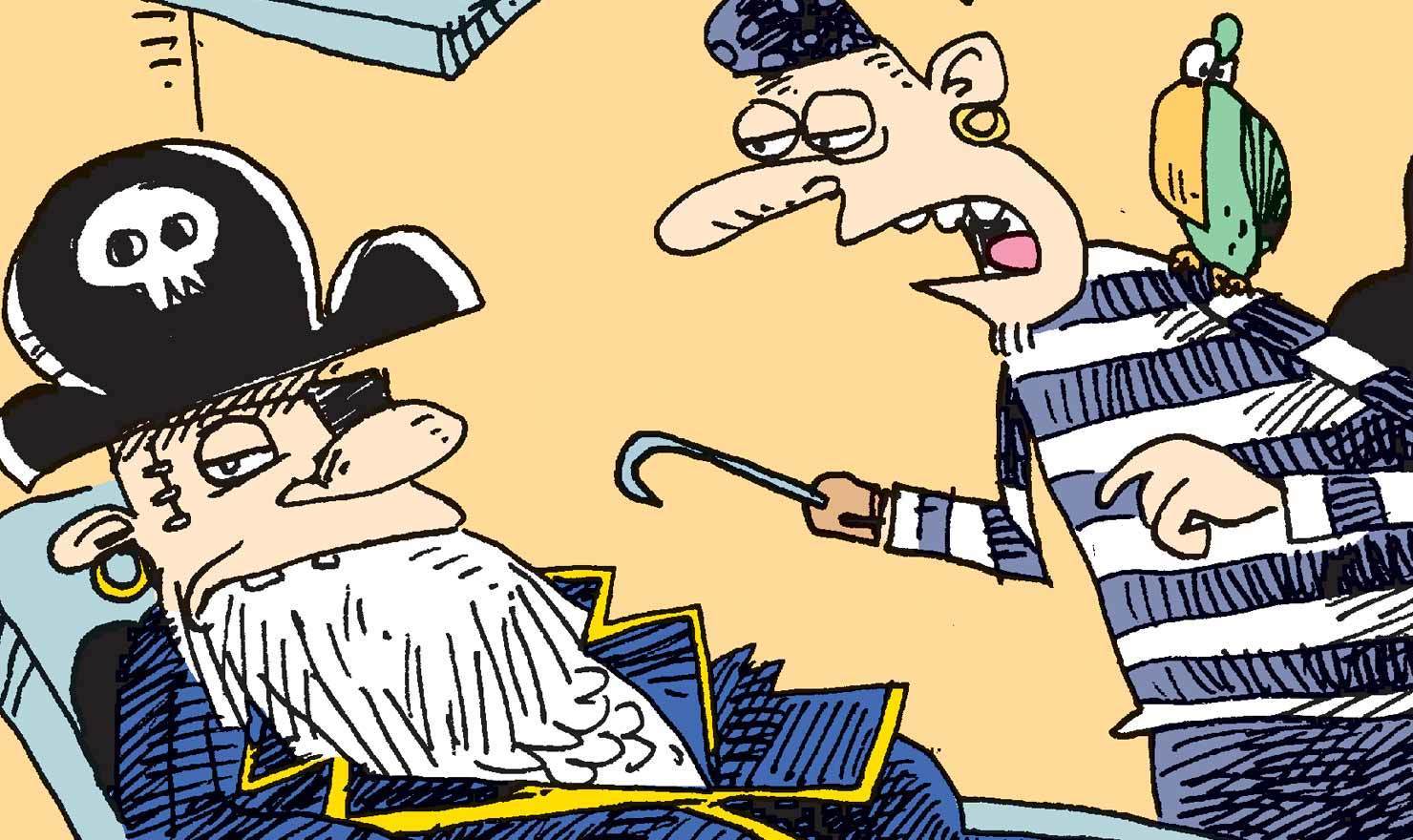The Buckets by Greg Cravens for December 28, 2014
Transcript:
Our calendar is all messed up. That's okay. We start a new one soon. I'm lookin' at the new one. It says New Year's day is a Thursday. So? New year, new month, new week, dad. Well, it doesn't work like that, see, a new year is I dunno, based on the sun... And months are based on the moon. Sorta kinda but they don't match up, see... So, what's a week based on? Er... The creation in Genesis? Ok, but... Wise new year in January and not in spring or something? Oh! I know that one! Janus, the two-faced God, looked forward and backward. What? The Romans, y'know, named January after Janus, and new year is when you look forward and backward. Our calendar is all... Messed... Up. Yeah, ok.







Agent54 almost 10 years ago
That is why I wear a binary watch – ones and zeros – non of this silly human confusion stuff and concepts. Always go to the basics.
Hunter7 almost 10 years ago
Re: yesterday’s Eddie. He looks like some of the cats that climb into the Christmas trees. – yeah…. I saw a few cat videos from that thing called YouTube during the last couple of days.
Hunter7 almost 10 years ago
Spring Equinox makes sense. As does the Fall Equinox. BUT – Winter Solstice! We start getting more daylight. New Year should be Winter Solstice. So say we all! – right? :)
cabalonrye almost 10 years ago
Blame the Babylonians, there’s the ones who invented a base 60 system.
Liverlips McCracken Premium Member almost 10 years ago
But the New Year is the start of summer in the Southern Hemisphere. Gives you a whole different perspective.
zmech13 Premium Member almost 10 years ago
Actually, New Years day use to be March 25 during the middle ages in many parts of Europe.
Greg Johnston almost 10 years ago
We start getting longer days at the winter equinox, but the sun doesn’t start rising earlier until Jan. 1 or 2, due to the fact the length of a solar day is around 23:59:30 at this time of year. Not that that really matters, unless you’re keeping time with accurate clocks, which those who created the calendar were not. The. explanation for why Jan.1 and not the equinox that I’ve heard is just that without accurate timekeeping, Jan.1 is sufficiently past the solstice to be sure the days are longer. http://www.bbc.com/news/magazine-30549149
Comic Minister Premium Member almost 10 years ago
Oh boy.
QuietStorm27 almost 10 years ago
Don’t over-think it, in fact don’t think about it at all and you’ll be fine. New Year’s Day is on a Thursday because it’s a week after Christmas which was on Thursday. Don’t think about when Christmas should actually be! :-)
dzw3030 almost 10 years ago
Sometimes I think the cartoon universe bleeds into the real world, hence some of the comments. Happy New Year, everyone! :-)))
Number Three almost 10 years ago
I learned on an Andy Capp strip (on GoComics) that the calendar repeats itself every 400 years.Bet Toby didn’t know that… Well neither did I and I learned it off a comic strip.
Haha.
xxx
carolhecox almost 10 years ago
I’m proud of you for knowing that the week comes from the Bible.
Saucy1121 Premium Member almost 10 years ago
France tried something similar after the revolution, but since they were the only ones doing it, it didn’t work out very well. http://en.wikipedia.org/wiki/Decimal_time
english.ann almost 10 years ago
If Toby is upset that New Year’s Day can fall on any day of the week, he’s probably angry about his birthday falling on any day of the week, too.
pschearer Premium Member almost 10 years ago
I believe Jan. 1 became the New Year with the switch from Julian to Gregorian calendars.
(Fellow Unix Nerds: do “man cal”.)
mafastore almost 10 years ago
I am an 18th century (USA) reenactor. Years, months, and days are set by nature. Everything else in time is set by man. This discussion confuses people at reenanctment events.
Weeks have not meaning in nature. We could have 3 weeks of about 10 days to the month.
Hours, minutes, seconds – we could have 20 hours of 100 minutes of 100 seconds a day – it has been decided to have 24/60/60.
Early clocks only had hour hands. Later ones had hours and minutes, more recently seconds were added. When one did not have exacted planned meetings or a train to catch, less division was needed on clocks and watches.
Now the capper – the time is incorrect in most places compared to the natural time. Huh? Prior to the invention of standard train time in the late 19th century each town clock was set to the time the sun was overhead as noon, home clocks (when people had them) and watches were set to same. As a result each location had a slightly different time. When trains started running they needed a standard time system and the countries were split into one hour time zones. So somewhere around the center of say, US eastern time at noon, it really is noon. On the eastern side of the time zone it is later, on the western side of the time zone it is earlier.
mafastore almost 10 years ago
Think about this – the winter solstice is the start of winter, it is also the shortest day of the year, and it is colder (supposedly) after it. Why is it not balanced so that it is as cold a month before (for example) the shortest day of the year as it is on a month after the shortest day.
Why is midsummer day in June(the summer solstice) , when the middle of summer is at the end of July?
mbzylnf2 almost 10 years ago
The point is that years and days are real, physical units, and they aren’t in an integer ratio, let alone a round one.
@Number Three the 400 years is how often there is a missing leap year. There’s another, even less frequent correction on top of that, but 28 years is how often it repeats without a correction.
mafastore almost 10 years ago
It is actually multiples of 12 as in the calender months. But the point is that it could be different and is not set by nature at 24 hours, 60 minutes an hour, 60 seconds a minute.